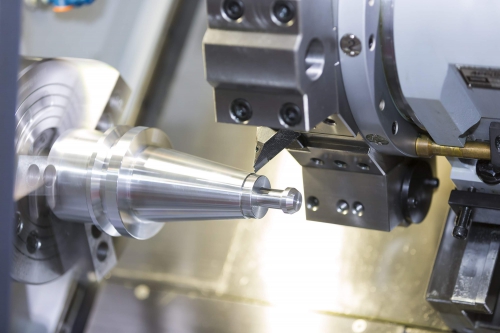10 Things to Consider While Using CNC Milling Machines
CNC stands for Computer Numerical Controlled machining. Milling is a machining process that is similar to cutting and drilling, and is capable of achieving a number of operations performed by drilling and cutting machines. This article will discuss the 10 necessary things milling machine users need to succeed.
Things to Consider for Beginners:
If you are a novice in using a CNC milling machine, then here are 10 things that you need to bear in mind to succeed:
- Use Good Quality Cutters: It is very important to use good quality cutters from reliable sources that have reasonable prices. Using a decent cutter takes care of the variables that decide your success or failure. You can select from the following sizes:
-
-
- 1/2″
- 1/4″
- 3/16″
-
- Use Good Quality Vise, a set of Parallels, and a Clamping Kit: Though on an expensive side, vises are very important. Buying a good quality vise will be a wise decision, as it is a valuable tooling piece that can last for several years. To mount your vise, you’ll need a clamping kit. Till the time you become knowledgeable at making step jaws, you’ll also need a set of parallels.
- Get a Misting Setup for Coolant: If your CNC milling machine isn’t equipped with flood coolants, then you will be required to get a misting setup. Misting systems when placed inside an enclosed area, produce billions of droplets, which provide cooling as they evaporate. Misting coolant systems spray a mist, thus cooling and lubricating the cutting tool.
- Learn How to Use MDI: To have a fair understanding about what your program is doing, you’ll have to learn some basic g-codes. Keep on practicing the moves in X and Y axes, until the cutter goes exactly where you want it to go.
- Make Use of Feeds and Speeds Calculator: Feeds and speeds calculators help you ensure that the spindle feed rate and speeds are perfect for that first cut. Compared to manual machining, CNC is a much tougher work style for cutters. Always focus on getting your feeds and speeds right from the start.
- Get a Z-height measuring Device and Edge Finder: To avoid any accidents, the computer in the fabrication machine needs to know the position of the tool tip. This can be done with the help of Z-height measuring gadget of some kind. The gadget consists of a needle, and is used to lower the tool until the needle is zeroed. You should learn how to use these to tell your tool length to the machine. This will tell your machine the position of the tip in Z axis. You will be needing Edge Finder to establish the position of X and Y axes.
- Learn to Tram your Mill and Vise: Tramming is a basic skill that you need to learn. From the time you first start machining, you should get into the habit of checking the mill’s tram after regular intervals. In addition to this, make sure that you know how to tram your vise. This allows the jaws to be aligned properly with one axis or the other.
- Start with Aluminum, Brass, and Mild Steel: You should not select difficult materials if you are a beginner. Instead, you can go for aluminum or brass. Once you start acquiring certain skills, you can start using mild steel. After you master cuts in these materials, you can consider a difficult material such as stainless steel.
- Learn How to Square a Block of Material: In squaring, you will need to make a series of milling cuts until all sides are properly perpendicular or parallel to each other. At this point, the workpiece is square. You need to learn how to square a block of material. Cut out some pieces of material that are a bit oversized to serve as vise jaws.
- Graduate to CAD/CAM: Last but not the least, you need to start pumping out the g-code. For this purpose, you need to be skilled with CAD/CAM. You can start by watching several videos on the topic, or find online forums where you can get help with these programs.
For more information or benefits on CNC milling machines, you can get in touch with the experts at Brogan-Patrick. We have a huge experience in providing services such as CNC milling, CNC turning, CNC screw machining, and plastic injection molding.

